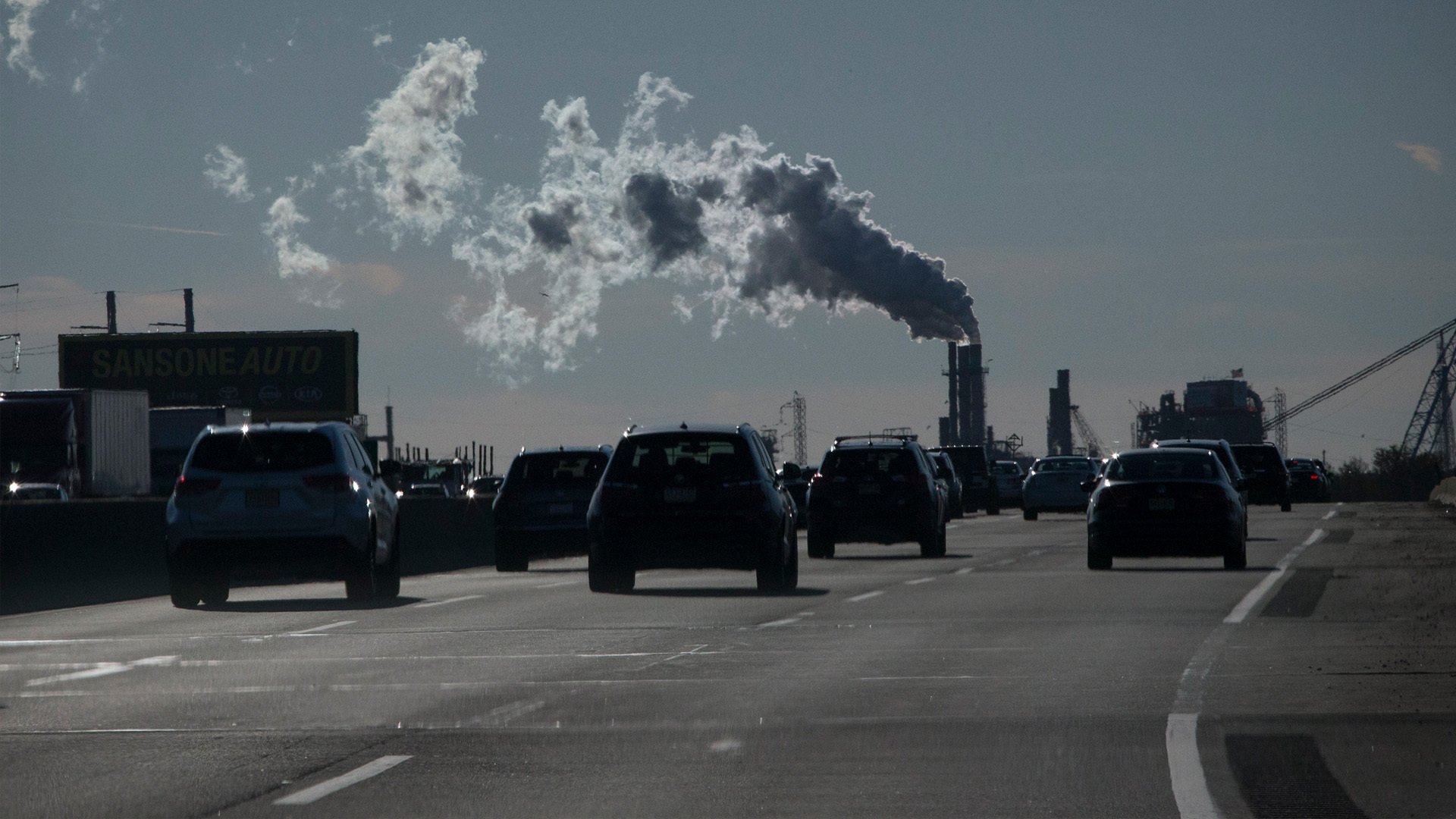
EPA says soot rule will save thousands of lives, but cost businesses millions
By Jack Aylmer (Reporter/Producer), Emma Stoltzfus (Editor)
Media Landscape
See how news outlets across the political spectrum are covering this story. Learn moreBias Distribution
Left
Right
Untracked Bias
The Environmental Protection Agency (EPA) is taking action to cut down on the dangers posed by soot inhalation, which can lead to health issues such as asthma, heart attacks, strokes, and more. In an effort to prevent these potential medical complications, the agency has announced stricter guidelines for allowable levels of soot in the air, lowering the annual standard by 25%.

Download the SAN app today to stay up-to-date with Unbiased. Straight Facts™.
Point phone camera here
“The Biden administration is taking life-saving action to protect people and rein in deadly pollution,” said Abigail Dillen, president of Earthjustice. “The science is crystal clear. Soot, otherwise known as fine particle pollution, is a killer. It is driving heart disease, our asthma epidemic, and other serious illnesses.”
According to the EPA, the implementation of these new regulations, expected to be completed by 2032, could prevent up to 4,500 premature deaths annually. Researchers have also highlighted that lower-income communities stand to benefit the most from this initiative, which could potentially save Americans $46 billion in health care costs.
“This final air quality standard will save lives and make all people healthier, especially within America’s most vulnerable and overburdened communities,” said EPA Administrator Michael Regan. “Cleaner air means that our children have brighter futures, and people can live more productive and active lives, improving our ability to grow and develop as a nation.”
However, achieving these benefits will require significant investments. The industrial sector is now facing an annual bill of close to $600 million in order to comply with the EPA’s air pollution requirements. The U.S. Chamber of Commerce has cautioned that approximately 20% of counties nationwide would need to adjust their soot levels to meet the requirements.
Concerns have been raised that businesses in these areas might opt to relocate their operations to other nations with less stringent environmental standards, posing a threat to American manufacturing jobs.
Unbiased news.
Directly to your inbox. Free!
Learn more about our emails. Unsubscribe anytime.
By entering your email, you agree to the Terms & Conditions and acknowledge the Privacy Policy.
“The cost of complying with this regulation would fall predominantly on the private sector,” said industry groups in a letter to the White House. “It would hinder the ability of our member companies to create jobs, innovate and invest. Lowering the current standard so dramatically would create a perverse disincentive for American investment. The proposed standard would reduce GDP by nearly $200 billion and cost as many as 1 million jobs through 2031.”
This could hamper Biden administration’s goal of promoting domestic production, particularly in sectors where technology is predominantly manufactured abroad. The EPA’s move to tighten soot regulations may limit the impact of legislation aimed at incentivizing the establishment of new electric vehicle battery plants, computer chip factories, and infrastructure projects.
“This is throwing up roadblocks to building the very infrastructure we need to create that cleaner economy of the future,” said Marty Durbin, senior vice president for policy at the Chamber of Commerce. “Manufacturing is going to be affected.”
Despite these economic concerns, the EPA asserts that the problem may not be as widespread as projected by the Chamber of Commerce. According to data from their air monitors, the agency believes only 52 U.S. counties would exceed the 2032 soot limit level.
[JACK ALYMER]
ASTHMA. HEART ATTACKS. STROKES.
THESE ARE A FEW OF THE HEALTH DANGERS POSED BY SOOT INHALATION — A PROBLEM THE ENVIRONMENTAL PROTECTION AGENCY IS TAKING STEPS TO REDUCE.
A NEW E-P-A RULE WILL REQUIRE POLLUTERS TO CUT THE AMOUNT OF SOOT THEY PUMP OUT BY 25 PERCENT IN 20-32.
THE AGENCY CLAIMS THE MOVE COULD PREVENT UP TO FORTY FIVE HUNDRED PREMATURE DEATHS EVERY YEAR AND SAVE PEOPLE TENS OF BILLIONS OF DOLLARS IN HEALTH CARE COSTS.
BUT THE MOVE COMES WITH ITS OWN PRICE TO PAY.
THE E-P-A SAYS COMPLIANCE WITH THE NEW RULE COULD COST BUSINESSES NEARLY SIX HUNDRED MILLION DOLLARS ANNUALLY.
THE U.S. CHAMBER OF COMMERCE WARNS ALMOST TWENTY PERCENT OF COUNTIES IN THE U-S WOULD BE IN VIOLATION.
COMPANIES IN THOSE AREAS COULD CHOOSE TO PULL UP STAKES AND HEAD TO COUNTRIES WITH WEAKER STANDARDS.
THAT HAS THE POTENTIAL TO STAND IN THE WAY OF CURRENT AND PLANNED MANUFACTURING AND CONSTRUCTION JOBS THAT ARE KEY TO PRESIDENT BIDEN’S AGENDA.
THE PRESIDENT HAS REPEATEDLY SAID HE WANTS TO INCREASE DOMESTIC INFRASTRUCTURE PROJECTS AND RAMP UP PRODUCTION OF TECHNOLOGIES CURRENTLY MADE ABROAD.
THIS INCLUDES EV BATTERIES AND COMPUTER CHIPS, WHICH WILL REQUIRE THE CONSTRUCTION OF NEW FACTORIES THAT WILL CONTRIBUTE TO HIGHER SOOT LEVELS.
HOWEVER, THE EPA ASSERTS THE PROBLEM WON’T BE AS WIDESPREAD AS THE CHAMBER HAS PROJECTED.
BASED ON MEASUREMENTS FROM THEIR AIR MONITORS, THE AGENCY SAYS ONLY 52 U.S. COUNTIES WOULD BE ABOVE THE 20-32 SOOT LIMIT.
Media Landscape
See how news outlets across the political spectrum are covering this story. Learn moreBias Distribution
Left
Right
Untracked Bias
Straight to your inbox.
By entering your email, you agree to the Terms & Conditions and acknowledge the Privacy Policy.
MOST POPULAR
-
 Getty Images
Getty Images
DHS Secretary Noem tells wildfire victims to protect themselves and property
Watch 1:527 hrs ago -
 Getty Images
Getty Images
Former Social Security head claims DOGE will cause payment interruptions
Read8 hrs ago -
 Getty Images
Getty Images
Gen Z's approval rating constantly fluctuating
Watch 3:418 hrs ago -
 Getty Images
Getty Images
Trump to put tariffs on agricultural imports, tells farmers to ‘have fun’
Watch 2:0712 hrs ago




